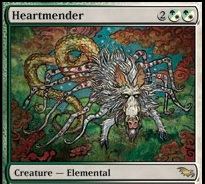“Quick, somebody help!!” A man rushes out of a room and looks about the hospital hallway in a panic. He spots me standing there in my white coat and races toward me. “She’s having trouble breathing! Please, come do something!”
After relaying the message, I hurry into the room to see if I can help. There she is, a woman is lying there on the bed, barely conscious. Her heart is racing, and she is so short of breath that she couldn’t get any words out even if she wanted to.
The panicked man glances back and forth between her, lying there helpless, and me, standing there unhelpfully. “She just came in for some heart problems! Why can’t she breathe?”
I glance around while my mind races to connect the dots. The pulse is 133. Tachycardia. The EKG looks a little funny, irregularly irregular. Atrial fibrillation. Oxygen saturation: 91%. Hypoxemia. I bring stethoscope straight to the mid-sternal line listen. “Heart failure,” I say. “Her heart is struggling to pump, so blood pressure is starting to back up into her lungs, causing fluid to leak into the airspace.”
He looks at me, apparently confused by the lingo. “Well, can’t you give her some drugs to help?”
The question catches me off guard, and my heart skips. What can I give her?
My mind flashes back to those pharmacology lectures with Dr. Levi, back to when I was struggling to stay awake and remember. I think back to his “drugs du jour” slide for heart failure, and drug names start floating back into my head. Amiodarone. Atenolol. Lasix. Digoxin. Dobutamine. Coumadin.
As quickly as I can, I try to remember anything I can about those drugs. Atenolol sounds like a beta-blocker, so it’s probably not useful right now. Lasix makes people pee, right? Hold on, is atenolol that asthma med? Wait, isn’t digoxin a poison?? And why am I thinking of coumadin? Isn’t that rat poison?!”

In case you’ve forgotten, I’m just a first year med student. Yet, even having just sat in those lectures just last month, I can’t remember drugs for the life of me. There are so freaking many of them to treat so many freaking many conditions. And they all have common names and trade names. Some have several indications. And what about dosages? Side effects and contraindications? Pill appearances? Drug interactions? How can I expect my brain retain that many minute details about so many little molecules?
While mulling that over, I realized that I actually have trained my mind to remember something almost as expansive: Magic the Gathering, the fantasy trading card game.
Back when I played Magic in high school, 2006, there were about 1,400 cards in the Kamigawa and Ravnica metagame. Cards with colors, types, casting costs, abilities, rarity. Power and toughness. Combos leveraging funny interactions between a couple cards. Strategies involving complex webs of many cards. Yet, I knew all of it comfortably, effortlessly. My understanding was so intricate and my knowledge of the current metagame was so encyclopedic that is was scary.
So why can’t I do it with drugs now? Standing there at the bedside, looking down helplessly at the lady with heart failure with a clearly agitated man freaking out next to me, I still don’t know what to do. There’s no such thing as a master flowchart for every drug in every situation, especially with every patient’s unique presentation. I can’t pull out my phone app or Wikipedia and look up each of these drugs and the thousands of others in existence. This information should reside in my active memory ready to leap into action on command, and it totally isn’t.
The man standing beside me suddenly becomes less agitated. “Dude, you’re taking too long. If this mannequin were real, she’d be dead by now.” The techs behind the screen pause the simulation session as the actor breaks character. “And if I were a real husband, I’d probably strangle you by now.”
Anyway… that was a dramatization of our first clinical simulation session that happened last week. The diuretic Lasix is proper heart failure treatment, but it works over long-term. Atenolol is a beta-blocker (not to be confused with albuterol the bronchodilator or allopurinol the gout medication), but it isn’t directly useful here. Amiodarone can help fix the atrial fibrillation, so it’s not a bad idea. Also, A-fib is acutely dangerous because clots can form in a badly-pumping heart and get stuck somewhere dangerous, so maybe Coumadin (warfarin), which is indeed historically a rat poison but also an anticoagulant (more on that later). Digoxin is both the foxglove flower poison and one of the world’s oldest heart medications. After all, drugs are just poisons that are dosed properly. Do you see what I mean? All these drugs are so nuanced.
Do you know what to give a diabetic person when you see him having a seizure? Well, if you inject insulin, you’ll exacerbate his low blood sugar, send him into a coma, and kill him. Instead, the “anti-insulin” glucagon would bring his blood sugar back to normal. Candy might work too.
How about a riddle? What funny feature do the drugs atorvastatin (Lipitor, for high cholesterol), diazepam (Valium, for anxiety, epilepsy), sertraline (Zoloft, an antidepressant), and ritonavir (an antiretroviral used for HIV infection) have in common? They’re all dangerous when taken with grapefruit juice! Why? Well, grapefruit juice has an enzyme that interacts with the cytochrome P450 isoform CYP3A4, the enzyme which metabolizes those drugs. This means that grapefruit will interfere with typical clearance rates and push bodily concentrations past therapeutic range and risk toxic effects or death.
Sounds like wizardry, right? Well, let me juxtapose that with some Magic talk for a second.
There’s a card named Cranial Extraction which does exactly what it sounds like it should do. When I play it, I essentially choose any card that exists, look through all of my opponent’s cards, and eliminate any of them I find. To play it appropriately, I had to predict what type of deck my opponent plays, what cards are typical and make each deck powerful, and which is going to be the most immediate or long-term threat. In other words, I had to know basically every card in the realm of Magic and how they interact with every card in the realm of Magic.
And you know what? I could do it. Playing against blue control? Take out his dragon, Keiga. How about snakes? See if he reaches critical mass without Sosuke’s Summons. A suspicious-looking black/white deck I’ve never seen before? Dark Confidant is a safe bet, unless I’m worried about damage, then maybe Kokusho or Ghost Council of Orzhova instead.
Medical and pharmaceutical jargon is complex, but that is no excuse because, as you can see, Magic jargon is pretty weird too. Yet, my mind absorbs Magic card trivia like a sponge and yet systematically rejects drugs <insert blood brain barrier joke here>. I’m embarrassed by this discrepancy. I’m frustrated by it. How long will it take me to rewire my brain so that my magical memory turns into medicinal memory?
Unfortunately, I have no good answer. I think it happened for Magic because I could practice with it. I was a bit obsessed with the game, so I spent tons of free time studying the cards and mulling over all their interactions. I built decks upon decks and pitted them against each other time and again. That repetition helped retention, and the practice enabled me to analyze the statistical patterns and evaluate which cards proved useful in which situations.
I don’t know if I can repeat that feat with drugs. There are only so many clinical skills session before I need to start suggesting drugs a year, and I can’t be haphazard about prescribing drugs. Here, let’s return to discussing the anticoagulant Coumadin/warfarin and it’s wily cousin: the anticoagulant heparin.
Lifelong anticoagulation therapy is prescribed for a variety of conditions; e.g. people with artificial valves take it so blood doesn’t react and clot on their synthetic implants. Overdosing means that their body will start randomly bleeding inside. Moreover, heparin has to be injected, which is pretty painful. Warfarin can be taken orally, which is convenient, but anticoagulation therapy is so dangerous that the patient needs their blood tested for clotting all the time anyway. It doesn’t help that the manufacturing of heparin is wildly inconsistent, so sometimes the right dose doesn’t elicit the expected response. And don’t start a warfarin regimen without heparin, because warfarin is pro-thrombotic at first and therefore will form clots instead of preventing clots and then send around those clots to kill.

Compared to the stakes in pharmaceuticals, which are billions of dollars and millions of lives, the stakes in Magic are nothing. In a game of Magic, you start with 20 life. When you cast your creatures, you can let them get dealt lethal damage and die. No big deal. They’ll simply go to the graveyard, which is just a pile next to where they used to be. You can even Zombify them! And when you go to 0 life, you just shuffle your deck and start right back at 20 life again.
I want to say maybe those greater stakes will encourage me and the rest of my fellow medical students to learn our pharmaceuticals, but that’s not the case. That’s just not how human memory works. I could ask you to remember the names methadone, ativan, artemisinin, methicillin, meloku, imatinib and you’ll probably forget all of them. That is, unless you hear stories about them.
Do you recognize the name methadone? I sure didn’t the first time around. Methadone the opioid that’s prescribed to people recovering from heroin dependence, and the patients must arrive at specialized methadone clinics every morning to receive their dose. The dose varies on how far along they’ve come in detox; 40 mg is pretty high, 10 mg is nearing completion of the course. I learned that from a guy who landed in the ER for being knocked unconscious for his methadone. Well then.
As I hear about all these drugs in med school, it really is the ones with stories that stick. I’ve watched ativan/lorazepam alleviate a seizing patient. Artemisinin is the current key anti-malarial (that might succumb to resistance soon (uh oh)). There’s already staph bacteria resistant to the antibiotic methicillin. And Meloku is a Magic card, so let’s ignore that. Instead, let me end by recounting the famous story of imatinib.
Cancer is terrible, and historically speaking cancer treatment is terrible too. Chemotherapy drugs have awful aim, so while they kill rapidly proliferating cancer cells (sometimes), they also ravage all of the body’s rapidly dividing cells, like hair follicles and intestinal lining and bone marrow. Chemotherapy reminds me of the Magic card Pyroclasm: indiscriminately destructive.

Before 2001, people with the cancer chronic myelogenous leukemia could expect to live 3-5 years after diagnosis. Enter imatinib, a little molecule that some scientists found to precisely target the single signature mutated protein in CML. Its specificity and efficacy was unprecedented, almost too good to believe. It has basically no side effects. Imatinib, or Gleevec, returns a normal life expectancy to the majority of people with CML. They just pop a pill every morning and live without having to worry about their cancer. It’s like real life magic.
As I continue struggling to learn drugs, I’ll try to remember who it’s for. To doctors, a drug can be as insignificant as one script, an illegible scribble and signature on a prescription. To patients, that little slip of paper promises more magic than any trading card can ever contain.

Disclaimer: obviously, this is a storytelling case fabricated by a first year med student. Do not use it for medical advice. Talk to your doctor instead. Magic images courtesy of wizards.com.

